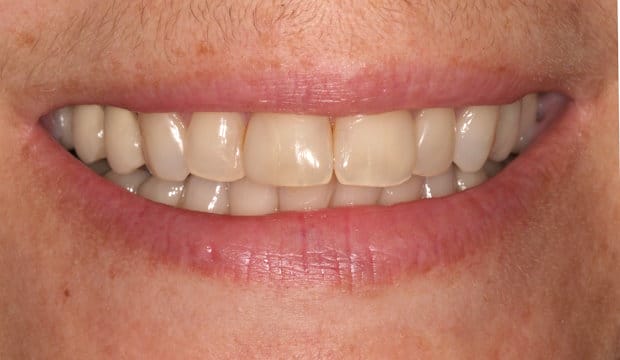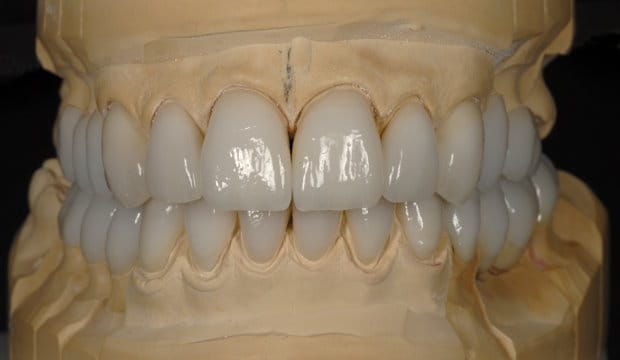
BEFORE

AFTER
How does Smile Makeover work?

Step #1 Initial Assessment & Preparation
After a dental hygiene session, impressions were taken to create a wax model of the patient’s new smile. This allowed the patient to see the expected outcome before deciding on the treatment plan. The treatment plan included veneers for the front teeth and single crowns for the back teeth.

Step #2 Digital & Conventional Scans
The teeth were prepared, and digital scans were taken using advanced laser and optical technology, capturing highly detailed images of the teeth and gums. Conventional impressions were also taken to compare with the digital data.

Step #3 Restoration Creation
The digital scans were processed, and polyurethane models were created from the data. The crowns and veneers were then milled from durable ceramic materials. The restorations were hand-finished for a natural look.

Step #4 Fitting the Restorations
Once the crowns and veneers were ready, they were tried in the patient’s mouth to check the fit and appearance. After adjustments, the restorations were cemented in place, and x-rays confirmed that the fit was perfect.

Step #5 Results
The full mouth reconstruction successfully addressed the patient’s concerns, resulting in a more natural and aesthetically pleasing smile. The use of digital techniques ensured precise fits for the crowns and veneers, while the hand-finishing provided a realistic appearance.
Explore more of our before & afters…
Wimpole St Dental Clinic has strict sourcing guidelines and relies on peer-reviewed studies, academic research institutions, and medical associations. We avoid using tertiary references. You can learn more about how we ensure our content is accurate and current by reading our editorial policy.
- Mehl C, Harder S, Byrne A, Kern M: Prosthodontics in digital times – a case report



